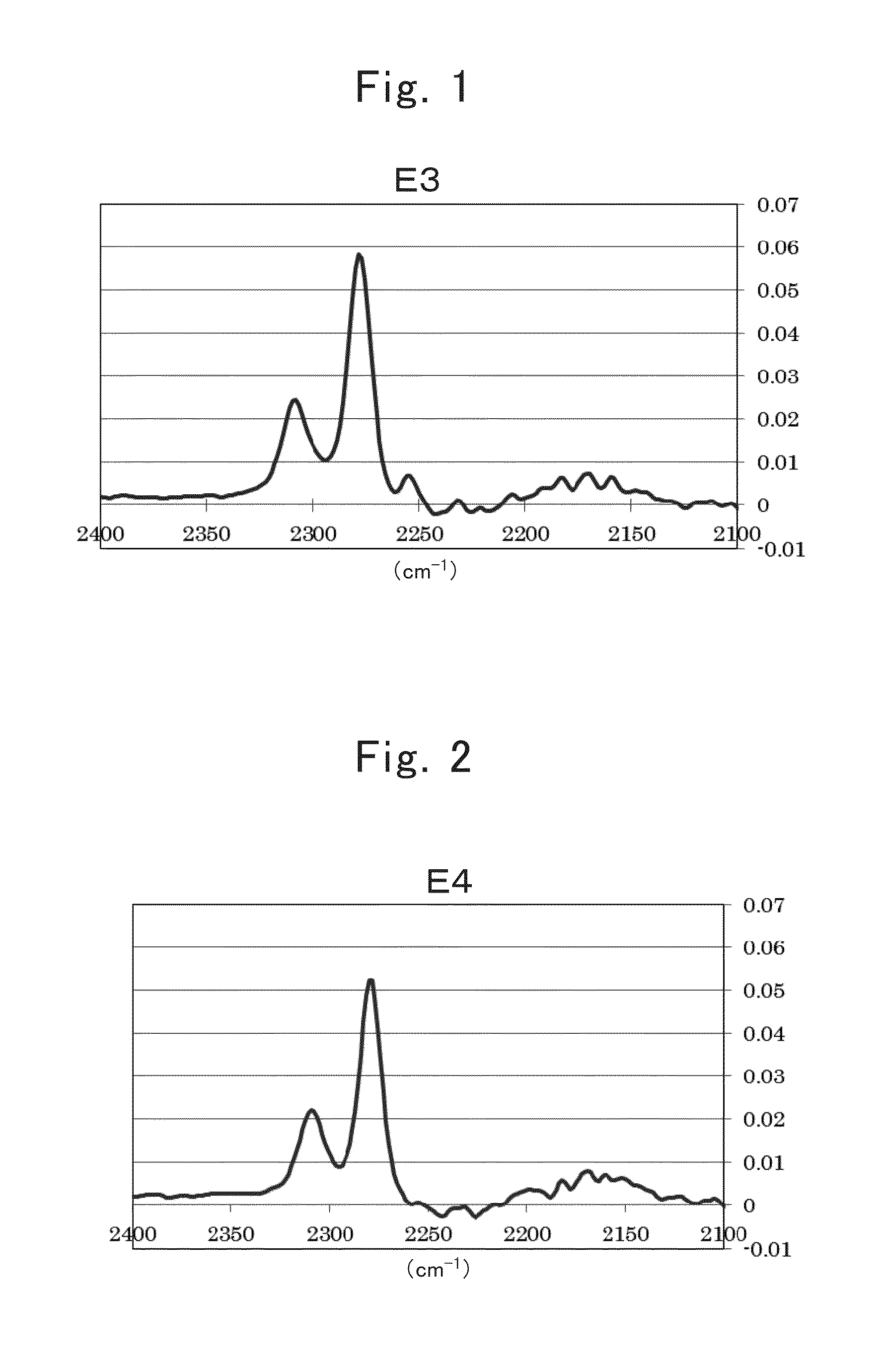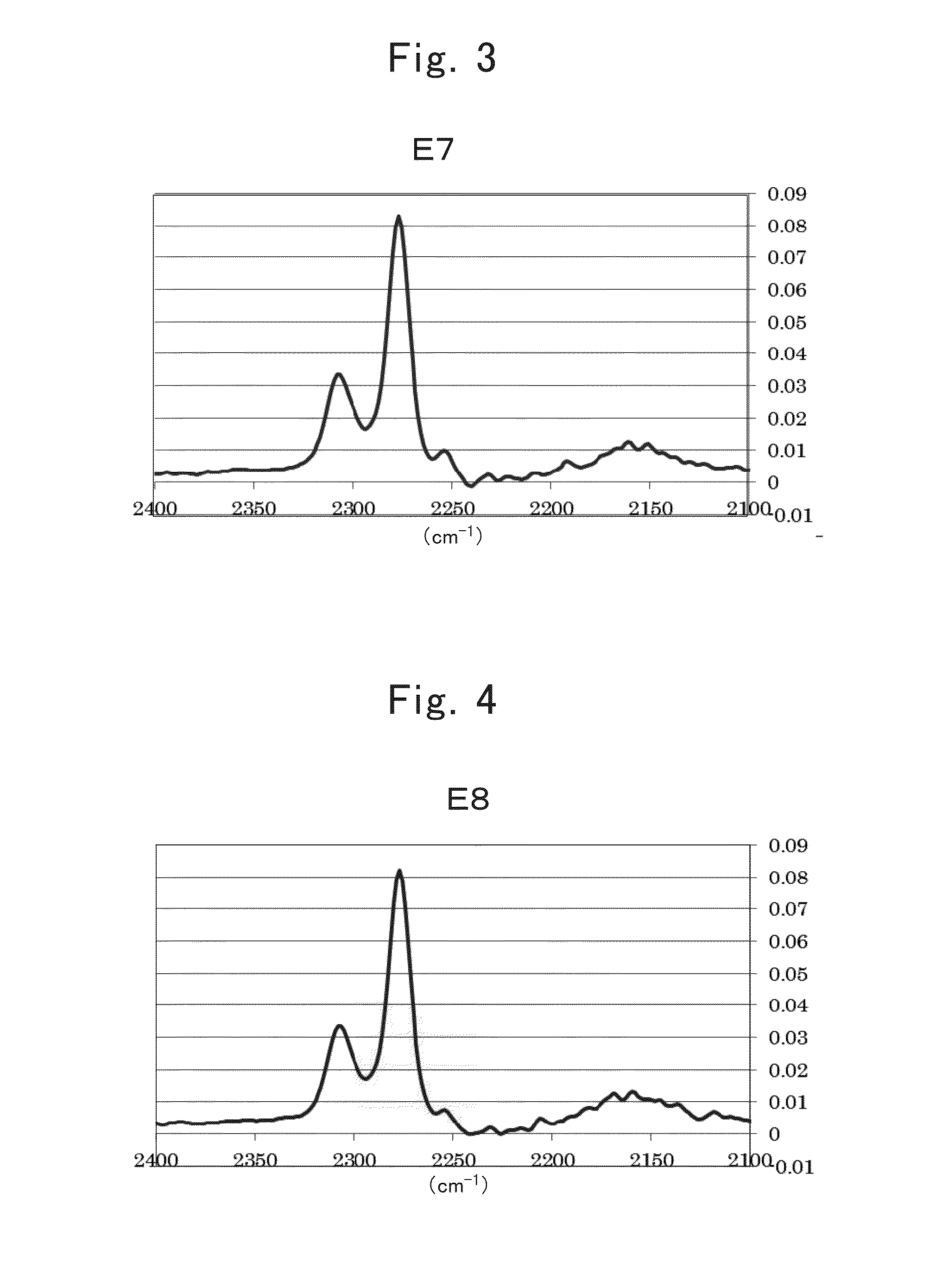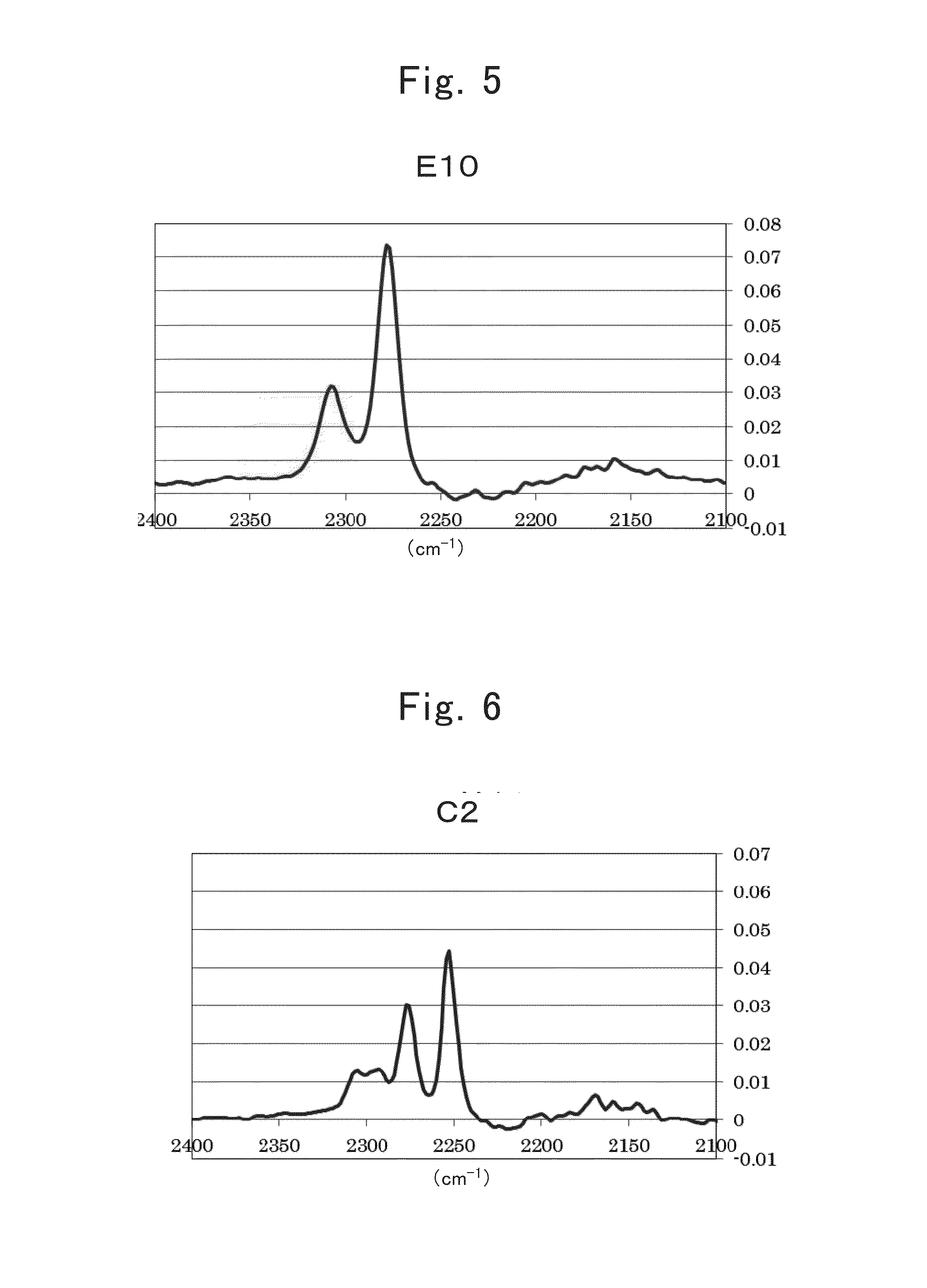Nonaqueous electrolyte secondary battery
a technology of nonaqueous electrolyte and secondary battery, which is applied in the direction of electrochemical generators, cell components, transportation and packaging, etc., can solve the problems of difficult improvement of rate characteristics, and achieve the effect of improving battery characteristics
- Summary
- Abstract
- Description
- Claims
- Application Information
AI Technical Summary
Benefits of technology
Problems solved by technology
Method used
Image
Examples
example 1-1
[0488]A nonaqueous electrolyte secondary battery of Example 1-1 was produced using electrolytic solution E8.
Negative Electrode
[0489]A SNO grade (mean particle diameter of 15 μm) graphite (hereinafter, sometimes referred to as graphite (A)) from SEC CARBON, Ltd., and polyvinylidene fluoride (PVdF) were added to, and mixed with N-methyl-2-pyrrolidone (NMP) to prepare a negative electrode mixture in a slurry form. The composition ratio of each component (solid content) in the slurry was graphite:PVdF=90:10 (mass ratio).
[0490]Raman spectrum analysis was performed on a powder of the graphite (A). As a device, RAMAN-11 (excitation wavelength λ=532 nm, grating: 600 gr / mm, laser power: 0.02 mW) manufactured by Nanophoton Corporation was used. In the Raman spectrum, a G / D ratio, which is a ratio of intensities of G-band and D-band peaks, was 12.2.
[0491]The slurry was applied on the surface of an electrolytic copper foil (current collector) having a thickness of 20 μm using a doctor blade to ...
example 1-2
[0496]A negative electrode was produced similarly to that of Example 1-1 except for using, instead of graphite (A), an SNO grade (mean particle diameter of 10 μm) graphite (hereinafter, sometimes referred to as graphite (B)) from SEC CARBON, Ltd. Otherwise, a nonaqueous electrolyte secondary battery of Example 1-2 was obtained similarly to Example 1-1. When Raman spectrum analysis was performed on the used graphite (B) similarly to Example 1-1, the G / D ratio, which is a ratio of intensities of G-band and D-band peaks, was 4.4.
example 1-3
[0497]A negative electrode was produced similarly to that of Example 1-1 except for using, instead of graphite (A), graphite (C) having a mean particle diameter of 10 μm. Otherwise, a nonaqueous electrolyte secondary battery of Example 1-3 was obtained similarly to Example 1-1. When Raman spectrum analysis was performed on the used graphite (C) similarly to Example 1-1, the G / D ratio, which is a ratio of intensities of G-band and D-band peaks, was 16.0.
PUM
| Property | Measurement | Unit |
|---|---|---|
| crystallite size | aaaaa | aaaaa |
| 2θ | aaaaa | aaaaa |
| crystallite size | aaaaa | aaaaa |
Abstract
Description
Claims
Application Information
 Login to View More
Login to View More - R&D
- Intellectual Property
- Life Sciences
- Materials
- Tech Scout
- Unparalleled Data Quality
- Higher Quality Content
- 60% Fewer Hallucinations
Browse by: Latest US Patents, China's latest patents, Technical Efficacy Thesaurus, Application Domain, Technology Topic, Popular Technical Reports.
© 2025 PatSnap. All rights reserved.Legal|Privacy policy|Modern Slavery Act Transparency Statement|Sitemap|About US| Contact US: help@patsnap.com



